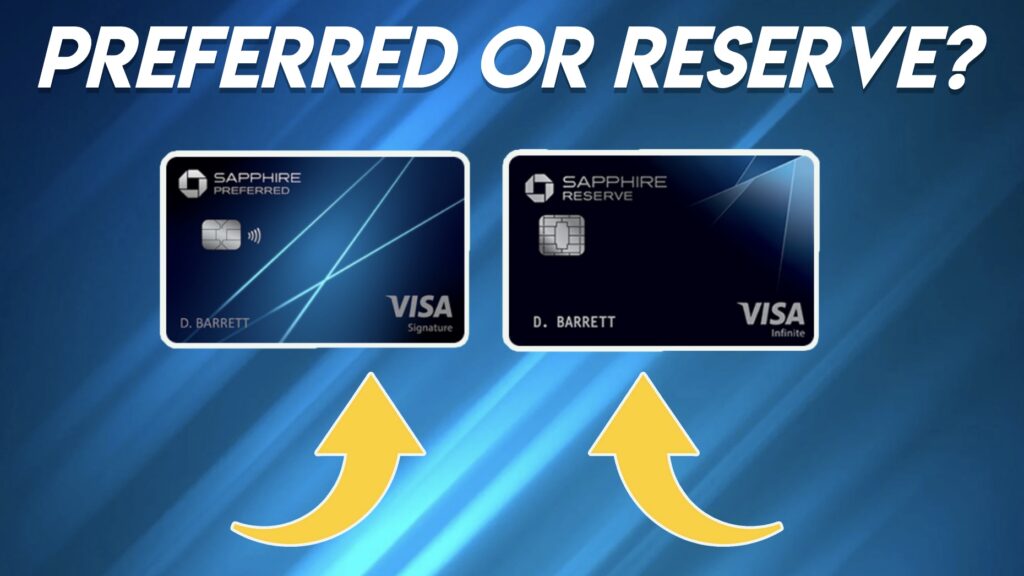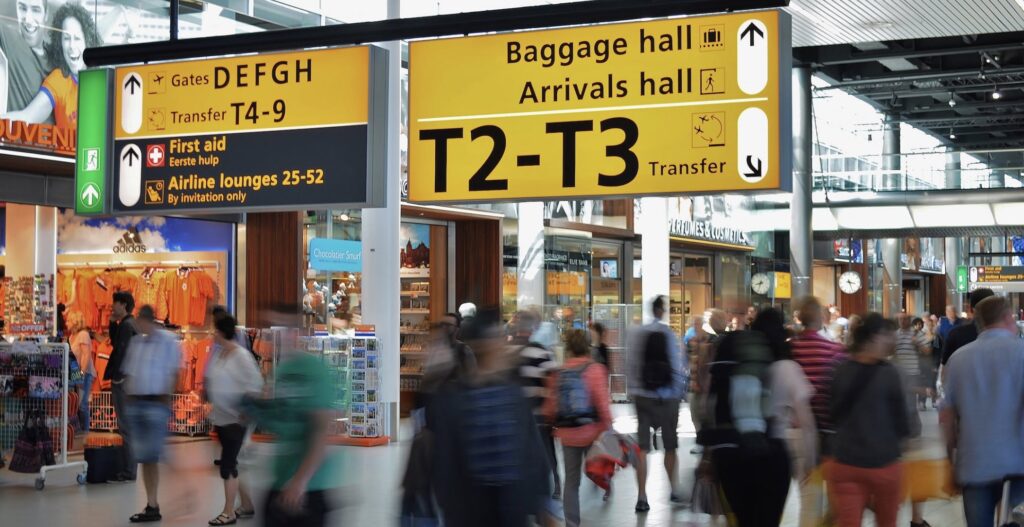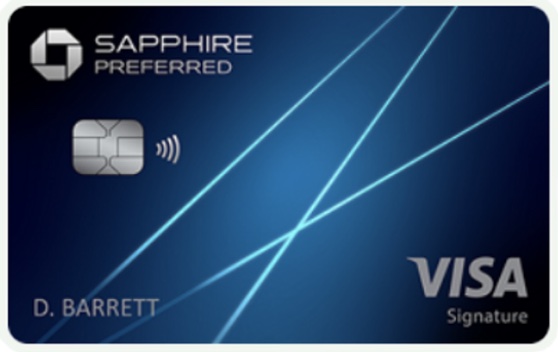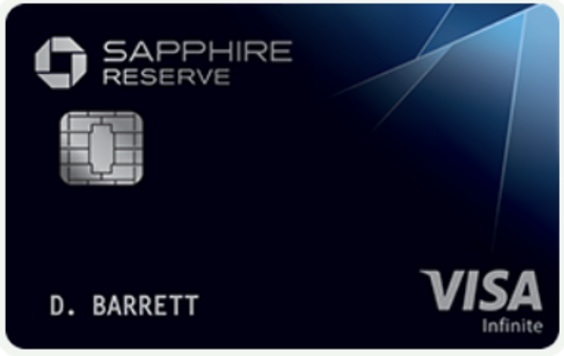by Daniel | Last Updated Jan 14th, 2023

We may earn a commission for purchases using our links, at no cost to you.
So you might the asking yourself, is there really that much difference between the Chase Sapphire Preferred card and the Reserve Card?
Well in this article I’ll answer that question and pretty much everything else there is to know about both of these cards.
I’ll take a detailed look at the rewards structure, annual fees, and additional benefits of each card to help you make a more informed decision on which card best fits your needs.
So whether you’re a frequent traveler or just looking for a solid rewards credit card this video should help to answer most of your questions
Who are these cards good for?
Both the Chase Sapphire Preferred card and Reserve card are targeted at individuals that travel a fair amount and like to dine out quite frequently, as this is where a fair amount of the rewards are offered with both cards.

The Preferred card offers a relatively cheap annual fee, and for this you can receive a decent array of benefits and the ability to earn points from a variety of different categories, making it a great choice for just about anyone.
Then with the more exclusive and expensive Reserve card, it is possible to earn even more benefits and higher points earning potential than the Preferred card, and this is perfect for frequent travelers that are really looking for a bit more value than what the Preferred card is offering.
Annual Fee
So there is quite a large difference in the annual fee for each of these cards, a $455 difference to be precise, which may make you question why you would pay so much more for a similar credit card.
And that’s something I will go into in the next section of this video.
But let’s take a quick look at the actual costs of each card.

So starting first with the Chase Sapphire Preferred card the annual fee is just $95.
And this really is great value considering what you get with this card.
It works out to be less than $2 a week

Now with the Chase Sapphire Reserve card, the annual fee is a heftier $550 each year.
Which is considerably more than the Preferred card, and depending on how you use your credit card may be the deciding factor on if it’s actually worth paying the extra $455 each year.
It works out to be $11.45 each week of card ownership.
Sign-up Bonus
So both cards are currently offering a very similar sign-up bonus, the only actual difference between the cards is the fact that Chase Sapphire Reserve Points are worth slightly more than Preferred points.

So with the Chase Sapphire Preferred card, the sign-up bonus on offer is the ability to earn 60,000 bonus points after spending $4,000 on purchases within the first 3 months of card ownership.
And seeing that Preferred points are worth 1.25 cents per point, this sign-up bonus is worth $750.

Now the more expensive Chase Sapphire Reserve card is also offering the same 60,000 bonus points if you are able to spend the same $4,000 within the first 3 months of card ownership.
Now as I mentioned just before, Reserve points are worth a bit more than Preferred points.
Basically, Reserve points hold a value of 1.5 cents per point, making this sign-up bonus worth $900.
So both cards offer a pretty generous signup bonus, but considering the price difference for the annual fee, the Preferred card offers quite a bit more value, at least for this section of the review.
Benefits and user perks
Now although both of these cards do offer some nice benefits, you will see that the Reserve card takes a pretty large step ahead of the Preferred card in this section of the review.

Starting first with the Chase Sapphire Preferred card it is actually possible to receive a 10% bonus of your total spend in the previous year back in the way of points.
So if you were to spend $15,000 over the course of a year, you would receive 1,500 bonus points, which would be worth $187.
There is also the ability to receive a $50 hotel credit each year for any hotel bookings that are made through Chase Ultimate Rewards.

Now finally there are 3 different partner benefits that are included with this card.
The first is a complimentary 6-month Instacart+ Subscription
This includes $15 in statement credits each quarter that you have an active subscription.
Instacart+ subscriptions cost $99 each year and basically offer free delivery on all orders that are over $35.
So the complimentary 6 months access is worth approximately $49.50.
There is then a complimentary 12-month DashPass membership which usually costs $96 per year.
And this provides you with free food delivery on orders that are over $12.
Then finally there is a $10 monthly statement credit for use at Gopuff.com

GoPuff is a delivery service that can deliver anything from food, drinks, home essentials, and even over-the-counter medications.

Now with the Chase Sapphire Reserve card, there is substantially more value to be had.
The first notable benefit that is actually very simple to use this the $300 annual travel credit.
This covers a wide variety of travel-related expenses that is really quite easy to take advantage of, and best of all it technically brings the annual fee of the card down to a more reasonable $250.
There is then a complimentary Priority Pass Select membership that is valued at $469 each year,
And unlike some other premium credit cards that offer a priority pass membership like the Amex Platinum card, the priority pass membership that comes with the Reserve card also offers the ability to receive a credit of up to $28 when dining at one of more than 30 different airport restaurant locations within the US.
With this it is possible to bring one guest along, so there is up to $56 in credit available for each visit you make.
Just note that this is only available at participating airport restaurants on the same day you are flying.

And if you want to learn all about what Priority Pass is and how to take full advantage of it, check out my in-depth review here.
Like a lot of other premium credit cards, there is a $100 credit that can be used for either Global Entry, TSA PreCheck, or NEXUS.
With access to The Luxury Hotel & Resort Collection, it is possible to receive daily breakfast for two, a $100 credit for use at the hotel, a room upgrade if it is available, and then early check-in and late check-out if it is available.
You receive the same $10 Gopuff statement credit as the Preferred card, but with the Instacart+ membership, you receive an additional 6 months of membership for a total of 12 months.
Along with this, the DashPass membership is the same complimentary 12 months but it also includes $5 in DoorDash credits each month.
So as you can see the Reserve card offers substantially more value when it comes to benefits and user perks, although if you don’t travel much a lot of these extra benefits may not make sense for you.
Points earning potential
Now in terms of Points earning potential, both cards offer a fair share of options for earning points.
But again for this section, you will see that the Reserve card has the ability to earn substantially more points than the Preferred card.

So the top earning category for the Preferred card is the ability to earn 5x points for any travel-related purchases that are made through Chase Ultimate Rewards.
Along with this, any purchases made through Lyft ides will also receive 5x points.
Then the following categories will earn 3 points:
- Dining in and take-away
- Online grocery Purchases (not including Target, Walmart, or any Wholesale clubs)
- Select Streaming services
Then any travel that is purchased outside of Chase Ultimate rewards will receive 2x points.
And all other purchases made on the card will earn 1 point per dollar spent.

Now with the Reserve card the highest points earning potential is the ability to earn 10x points on any car rental purchases or hotel purchases that are made through Chase Ultimate Rewards. (but just note that this is after the first $300 is spent on travel – which relates to the annual travel credit)
Along with this, it is also possible to receive 10x points for any Chase Dining purchases that are made through Chase Ultimate Rewards.
And then all purchases that are made through Lyft rides will earn 10 x points.
Flights that are booked through Chase Ultimate Rewards will earn 5x points.
And then all other travel-related purchases that are made on the card that are not through Chase Ultimate rewards will earn 3x points.
Along with this, all purchases that are made at restaurants or for eligible delivery services will rear 3x points as well
Then everything else will earn 1 point per dollar spent.
So as you can see, the Reserve card has a broader range of options for earning more points than the Preferred card does.
And remember that the points you earn with the Reserve card are more valuable than the Preferred card.
Now it’s also worth noting that both cards offer the ability to transfer points at a 1:1 basis to 11 different Airline partners and 3 different hotel partners, and this can potentially result in even better value than the standard points value each of these cards offers.
Airlines partners include:
- Aer Lingus, AerClub
- Air Canada Aeroplan
- British Airways Executive Club
- Emirates Skywards
- Flying Blue AIR FRANCE KLM
- Iberia Plus
- JetBlue TrueBlue
- Singapore Airlines KrisFlyer
- Southwest Airlines Rapid Rewards
- United MileagePlus
- Virgin Atlantic Flying Club
Hotels Partners include:
- IHG Rewards Club
- Marriott Bonvoy
- World of Hyatt
Insurance coverage
Now when it comes to insurance-related coverage both cards offer somewhat similar protection, but as you might expect the Reserve card does actually offer a little bit more.
So both cards offer the same Trip Cancellation/Interruption Insurance which covers up to $10,000 per person and $20,000 per trip.
The Auto Rental Collision Damage Waiver is almost identical for both cards except the Reserve card offers up to $75k in coverage.
With Trip Delay Reimbursement both cards cover up to $500 per trip.
When using the Preferred card, this comes into effect after a delay of 12 hours or more, whereas with the Reserve card, the delay only needs to be 6 hours or more.

Both cards offer up to 120 days of coverage for Purchase Protection, with the Preferred card providing up to $500 per claim and a total of $50k per account whereas the Reserve card covers up to $10k per claim and a total of $50k per year.
There is the same Extended Warranty Protection for both cards that basically provides you with one extra year of coverage on warranties that are 3 years or less.
Now only the Reserve card offers the following coverage:
There is Return Protection that provides 90 days of coverage for items a store won’t accept back.
And this covers up to $500 per item and a total of $1k per year.
With Lost Luggage Reimbursement there is coverage of up to $3,000 for damaged or lost baggage.
And this covers immediate family members that are traveling on the same trip as the cardholder.

Then finally there is Emergency Evacuation & Transportation coverage that provides up to $100k for emergency evacuation, medical services, and transportation.
APR
So for the final section of this review, I’ll just briefly go over what the APR is for each card and what fees are charged for any late or returned payments.

Starting with the Preferred card the APR for Purchases and balance transfers is currently between 20.24% and 27.24%.
With a balance transfer incurring a fee of either $5 or 5% of the amount of each transfer.
The APR for a cash advance is 29.24% and will also incur a fee of either $10 or 5% of the amount of each advance.
Then the Penalty APR is 29.99% and comes into effect for either a late payment or a returned payment from your bank.
And each penalty carries a fee of up to $40.

Now with the Reserve card, the APR for purchases and balance transfers is slightly higher at between 21.24% to 28.24%.
With a Balance transfer incurring the same transaction fee of either $5 or 5% of the amount of each transfer.
Then all other fees are exactly the same as the Preferred card.
Final Thoughts
So that is pretty much everything there is to know about both the Chase Sapphire Preferred card and the Reserve card for 2023.
And in my opinion, although both cards offer great value, the Chase Sapphire Reserve card generally offers more overall value.
Although this will only be relevant to you if you do travel a fair amount each year, seeing that the higher points earning potential and extra benefits are mostly travel related.
So if you don’t travel that much throughout the year the Chase Sapphire Preferred card is a fantastic card that offers plenty of points earning potential and has a pretty decent signup bonus that is currently worth $750.
However, if you do travel a fair amount and are looking for a way to receive a ton of value, the Chase Sapphire Reserve card is a great choice.
With the $300 travel credit each year, your annual fee is essentially brought down to a more reasonable $250.
And then assuming you travel a few times a year, the Priority Pass Select membership and access to The Luxury Hotel & Resort Collection easily cover the cost of the remaining annual fee.
Now if you’re looking for something a little different than these two cards, why not check out my in-depth review of the best hotel rewards credit cards available in 2023.
